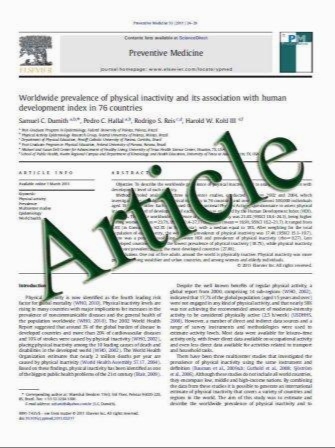IL-6 induction of TLR-4 gene expression via STAT3 has an effect on insulin resistance in human skeletal muscle
- نوع فایل : کتاب
- زبان : انگلیسی
- مؤلف : Tae Ho Kim Sung E Choi Eun Suk Ha Jong Gab Jung Seung Jin Han Hae Jin Kim Dae Jung Kim Yup Kang Kwan Woo Lee
- چاپ و سال / کشور: 2011
Description
We investigated the cytokines and mechanisms involved in the induction of insulin resistance in human skeletal muscle. Ten subjects with impaired glucose tolerance (IGT) and 10 control subjects were recruited. We performed biopsies on the vastus lateralis muscle and used immunoblotting to determine levels of inflammatory cytokines, Toll-like receptor (TLR) gene expression, and insulin signaling. We also used a human myotube culture system to examine the mechanisms underlying TLR-4 gene expression. To identify inflammatory cytokines associated with insulin resistance, we measured the levels of IL-6, TNF-a, TLR-2, and TLR-4 in skeletal muscle from nonobese patients with IGT and control subjects. Levels of IL-6, TNF-a, and TLR-4, but not TLR-2, were significantly increased in the IGT group. Insulin resistance decreased significantly in HSMMs following long-term IL-6 treatment. TLR-4 gene expression was significantly increased in human skeletal muscle myoblasts (HSMMs) treated with IL-6. To determine the main signaling pathway for IL-6-induced TLR-4 gene expression, we examined several signaling factors associated with IL-6 signaling pathways. We found that the active form of ‘‘signal transducer and activator of transcription 3’’ (STAT3) was increased. ‘‘Stattic’’ (a STAT3 inhibitor) markedly inhibited TLR-4 gene expression. IL-6 induction of TLR-4 gene expression via STAT3 is one of the main mechanisms underlying insulin resistance in human skeletal muscle.
Acta Diabetol DOI 10.1007/s00592-011-0259-z Received: 14 October 2010 / Accepted: 17 January 2011 Springer-Verlag 2011


